It’s been 60 years since the University of Guelph was founded in 1964. This May 8th marks the official anniversary, with six decades of history and impact in its home community.
U of G was established by the amalgamation of its three founding colleges – the Ontario Agricultural College (OAC), the Ontario Veterinary College and the Macdonald Institute.
OAC’s monumental 150th anniversary last week has highlighted the University’s many global research initiatives, but U of G has also had many impacts on the local Guelph community.
“For 60 years, the University of Guelph has been on a mission to Improve Life, and that commitment has always started at home,” says Dr. Charlotte Yates, U of G president and vice-chancellor. “I’m proud that the U of G community has been able to support Guelph’s innovation and prosperity throughout our history.”
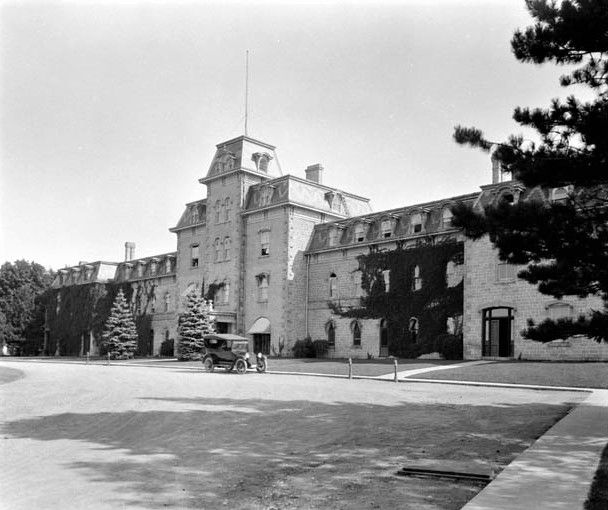
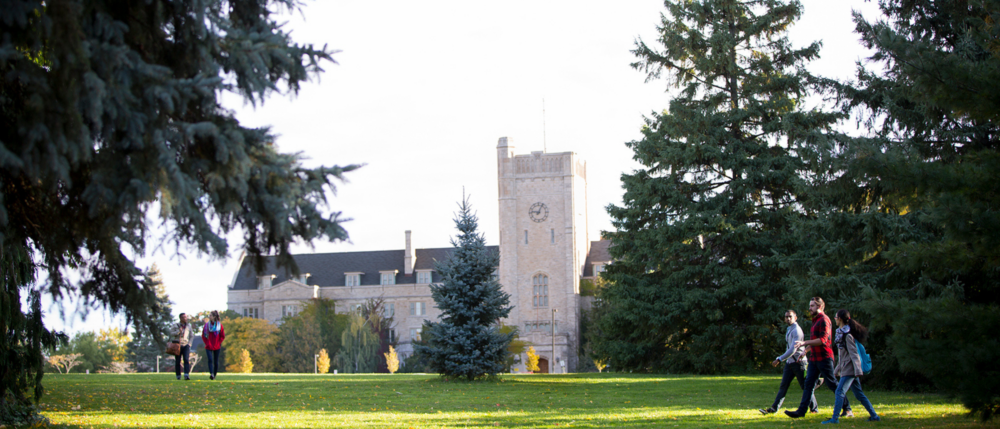
Here, the University reflects on how it has shaped the Guelph community over the years, and how its institutions and initiatives have become part of the lives of so many Guelphites:
- OVC Health Sciences Centre: Comprised of three veterinary hospitals, the OVC Health Sciences Centre has carried a legacy of more than 150 years of service to animals, with roots in OVC’s founding in 1862. It has long provided medical and surgical care for small and large animals in the Guelph area while training future veterinarians in a clinical environment.
- College Royal: The largest open house event of its kind in North America, College Royal began in 1925 as a livestock show run by OAC. It has since grown to involve all colleges, attracting over 20,000 visitors in one weekend, who enjoy performances, activities, learning experiences and more.
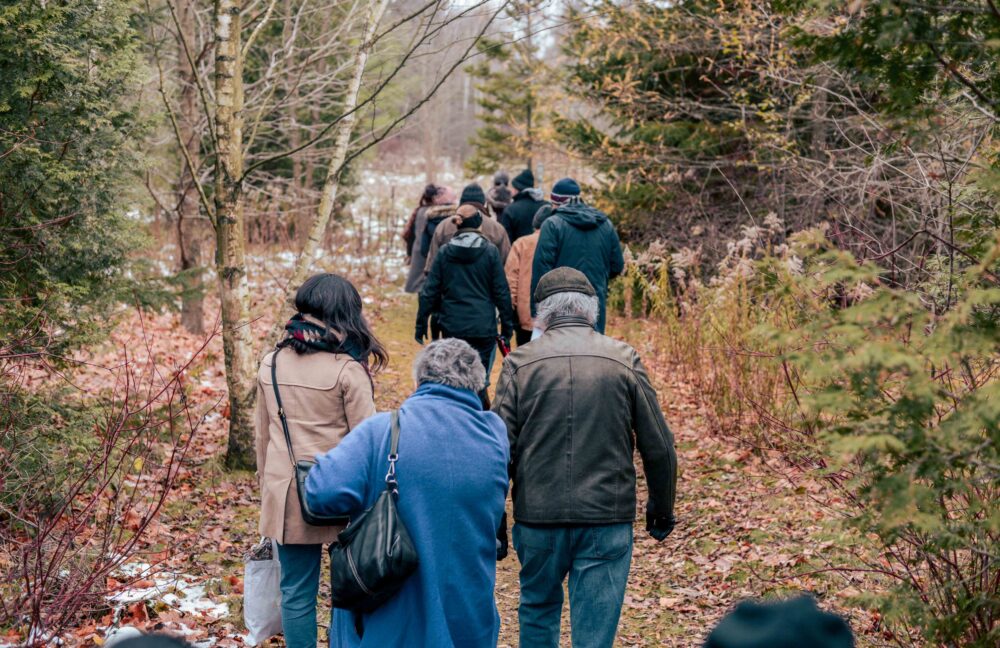
- The Arboretum: In 1970, 330 acres of the U of G campus were dedicated towards a “living laboratory” for research and education. Today, the Arboretum is the most-visited part of campus, with hundreds along its trails each week and enjoying native, introduced and rare species.
- Wild Ontario: Beginning in the early 1970s, Wild Ontario has grown to an environmental and science education program with an administrative home in U of G’s Department of Integrative Biology, teaching the Guelph community about the impact humans have on wildlife.
- Alumni Stadium: Built in 1970, Alumni Stadium has long been home to the Guelph Gryphons varsity football team and annual Homecoming celebrations. After the addition of a state-of-the art football pavilion in 2017 and state-of-the-art synthetic turf and track, the stadium now regularly hosts the Toronto Argonauts training camp.

- Art Gallery of Guelph: A non-profit gallery of over 9,000 works, AGG opened in 1980 with U of G as one of four sponsors. Today, the gallery tells the story of more than 300 years of Canadian art with a mission to nurture artistic experiences and drive positive social change.
- Creative Encounters: Since 1993, this science, technology and engineering outreach organization has provided hands-on learning experiences at camps, workshops, clubs, events and more, to spark curiosity and innovation in the next generation.
- Guelph Jazz Festival: In 1994, music professor Dr. Ajay Heble collaborated with Julie Hastings to found a festival that has brought creative improvised music to Guelph and gone on to build a strong international reputation.
- Gryphon Camps: Highly regarded in the Guelph community, Gryphon Kids and Camps are a long-standing tradition at U of G. They provide youth ages 5–17 with creative, exceptional and fun general activity or sport-specific programming, led by camp counsellors, Gryphon coaches and student-athletes.
- Guelph Junior Gryphons: Since 2013, U of G’s Athletic Department has developed partnerships with minor sport organizations in Guelph, allowing young athletes access to our facilities and to work with varsity coaches and represent themselves as Gryphons with their jerseys and team wear.
- The Maplewoods Centre for Family Therapy and Child Psychology: Established in 2021 by merging two clinical training centres that had served the community for 20 years, the Maplewoods Centre provides affordable counselling and psychological services to the community. It trains hundreds of graduate students on their path to becoming regulated health professionals.

Alumni Stadium, home to the Guelph Gryphons varsity football team and annual Homecoming celebrations
U of G campus landmarks have also been sites of cherished memories and traditions for the Guelph community:
- The Cannon, the antique British naval gun “Old Jeremiah,” rumoured to have been used in the war of 1812 and acquired by OAC in the 1880s, is painted by students to promote events, causes, and clubs, and it has even been used for marriage proposals. As tradition goes, painting is only allowed between sunset and sunrise.
- The Begging Bear, a 7.5-foot-tall sculpture created by Carl Skelton and installed in 1999, is a beloved icon for the students and an artistic metaphor for our animals’ need for protection.
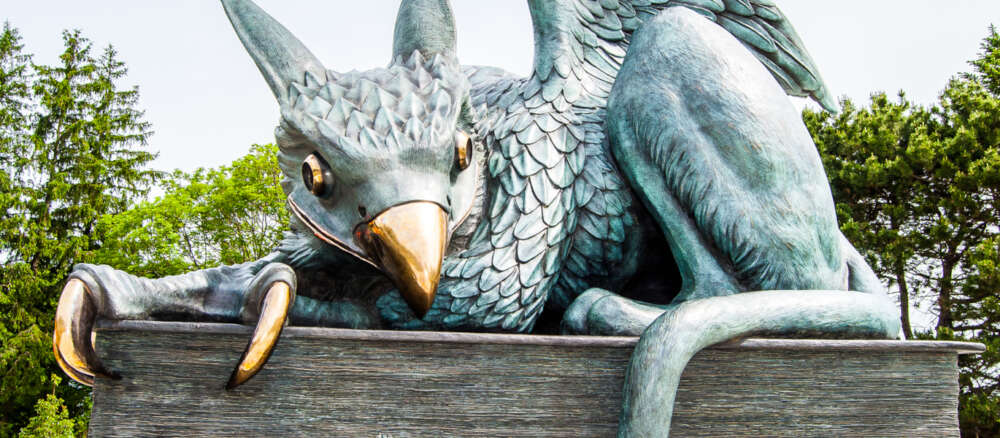
- The Gryphon statue was installed in 2014 on the corner of Stone Road and Gordon Street and has quickly become a city landmark. It’s rubbed for good luck during exam season and serves as the backdrop for many grad photos, especially as students prepare for convocation ceremonies in June.
Gryphons give back
Beyond profound economic impacts, U of G has been integral to Guelph community life.
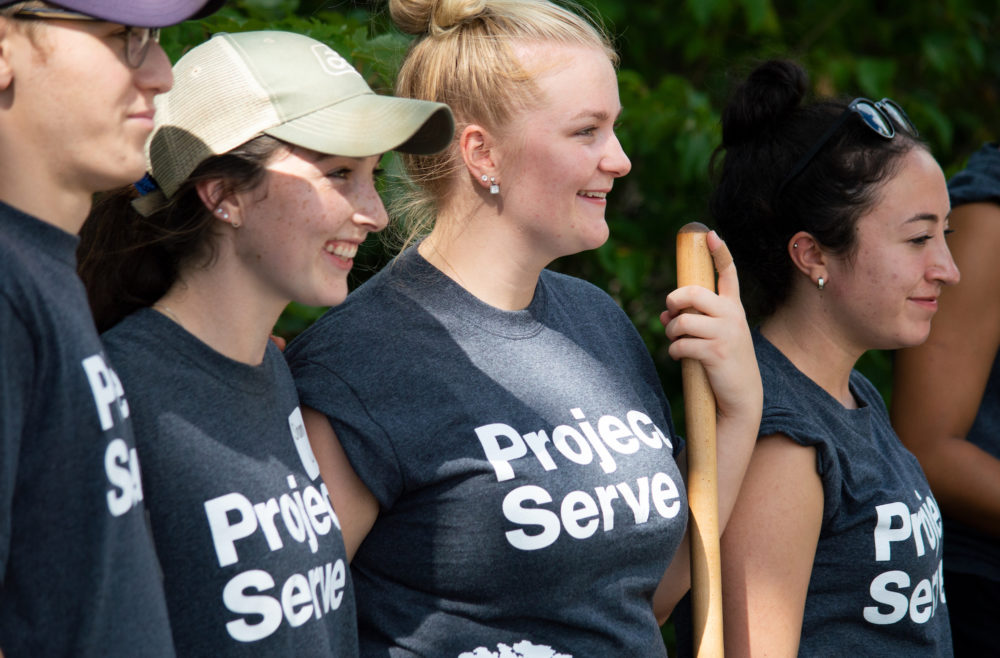
Every year, Gryphons share their talents and time through volunteer efforts, donating more than 1.5 million annual volunteer hours to the community. That includes Project Serve, a day at the start of each school year dedicated to volunteer work.
For more than 25 years, Project Serve student volunteers have worked with organizations such as the Guelph Food Bank and The Seed to address food insecurity; Hope House and Stepping Stone to assist the community’s unhoused, Community Living, Habitat for Humanity, the Guelph Humane Society and more.
U of G also runs one of the most successful United Way campaigns in Guelph, raising more than $500,000 last year.
The student-led MealCare program aims to combat food waste and food insecurity and has diverted 17,000 pounds of food from landfills. This translates to more than 40,000 meals delivered to Guelphites in need.
U of G’s Relay for Life, an annual overnight walk that supports cancer research, raised $125,693 in 2024, and over 20 years it has raised $1.5 million.
Improving Life in Guelph
Nearly 25,000 people at the Guelph campus – faculty, staff, students, alumni and visitors – help shape the city’s economic growth. U of G generates more than $2 billion of GDP in Guelph-Wellington and sustains 13,000 jobs each year through local spending.
This has allowed Guelph to flourish as one of the top cities in Canada.
The year also brings other major milestones in U of G history. College Royal turned 100 in March. This year also marks 150 years of OAC, 50 years of OUTLine – U of G’s resource and support centre for the 2SLGBTQIA+ community – and 20 years of the Indigenous Student Centre.
